Been a while since our last installment, on account of us not really having comics to analyze. There have been a multitude of developments in the games, especially direct integration of what happened at the end of “Uprising” into the games as discussed in a specialized “We Want Comics” column about Assassin’s Creed Odyssey, but on account of that not actually being a comic, we won’t be discussing it further unless such material is made available in this form.
Technically speaking, there was a released comic for the Assassin’s Creed franchise in early October 2019. However, ‘The Fall & The Chain’ was a reprint of material collected in 2012’s “Assassin’s Creed: Subject Four,” and thus not new information at all, but points that could be virtually ancient history (no pun intended) in light of the events of Assassin’s Creed III.
While elements such as the Great Purge of 2000 and a deeper look at the Bleeding Effect may prove prudent, it seems best to do so through the lens of newer releases to get a better sense of how things are moving forward, especially in light of how the franchise has evolved so significantly since the events of the aforementioned video game.
Instead, we turn toward the latest installment in the French comics published at Les Deux Royaumes and translated at Titan Comics, specifically a sequel to the “Conspiracies” duology.
History Lessons
For this new section, we will try to educate about the real-life historical events portrayed in Assassin’s Creed media. How those events are altered still would go under the relevant issue, but look here for some of the stories that reside outside of the secret history of the Isu-Assassin-Templar wars.
While some of the commentary may appear scathing, it is only addressed in such a way in order to show the full measure of the events portrayed, and why one element or another is being mentioned within the comics.
Occasionally, these connections may not be immediately obvious, and so will be mentioned about previous issues already discussed so long as they are still relevant to the current one. For example, there is at least one person in “Assassin’s Creed: Bloodstone, Book 1” who is known to be a major figure, but his actual identity isn’t clear until the yet-to-be-translated second volume, and so will be kept out until then.
Project BLUEBIRD
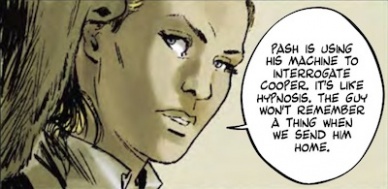
This Central Intelligence Agency (CIA) project took place between April 5, 1950 and the transition to Project ARTICHOKE by August 20, 1951, and was operated by the Office of Scientific Intelligence (OSI) branch within the CIA. Records of the project were declassified in January of 2004, and can be read here.
The overall project involved the use of hypnotism and drugs for interrogation purposes, particularly “to determine the bona fides of high potential defectors and agents,” with the inclusion of three-person teams of psychiatrists, “polygraph-hypnotists,” and technicians. The drugs themselves include injections of “subconscious isolation,” whatever that happened to mean (possibly related to the “speech-inducing” effects). The records also point to the use of the teams for “training, indoctrination, and experimentation.” Some of the notes even reference not only hypnosis or drugs, but also ESP (extrasensory perception), showing that even that paranormal phenomenon was under investigation as to whether or not it had any merit.
The fact that a document labeled as “Problems Involved in Obtaining a Psychiatrist” (dated February 27, 1950) notes that one of the eponymous problems is the potential for a psychiatrist’s ethics making it less than likely for them to cooperate with “certain more revolutionary phases” points to serious ethical violations, hence why the entire project was labeled as Eyes Only Top Secret in most cases.
By August 20, 1951, the project had transitioned to the “special interrogations” of Project ARTICHOKE, and ultimately led into the now-infamous Project MKUltra in 1953, which was meant to identify and develop drugs and procedures to weaken individuals and force confessions. The latter has been used in many pieces of fictional media and conspiracy theories due to the project’s nature and the destruction of most of its records.
Battle of Ấp Bắc
Continued below
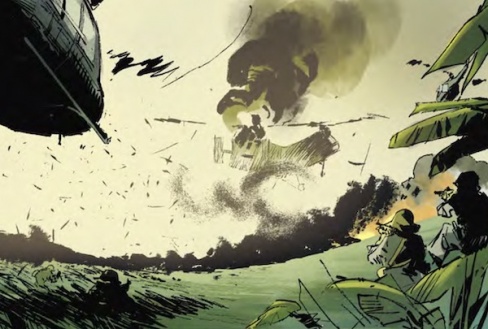
Taking place on January 2, 1963, this battle was the first time that the Viet Cong forces of North Vietnam stood and fought against a major South Vietnamese attack. Despite the American-South Vietnamese forces outnumbering the Viet Cong four-to-one, the Viet Cong lost less than a quarter of the number of combat personnel as South Vietnam and managed to take down numerous American aircraft. In all, it was deemed a disaster for both the American and South Vietnamese forces.
Assassination of Ngô Đình Diệm

At the culmination of a two-day coup d’état led by General Dương Văn Minh, President Ngô Đình Diệm, along with his brother and advisor Ngô Đình Nhu, was assassinated by the South Vietnamese military on November 2, 1963, while being allegedly escorted out as an arrest. Particular responsibility for the deaths is typically placed on their bodyguards, Captain Nguyễn Văn Nhung and Major Dương Hiếu Nghĩa.
Despite the fact that the generals in the military tried to cover up the executions as suicides, photographs of the Ngôs’ corpses surfaced in the media, with them having been brutally tortured.
Notably, the Central Intelligence Agency was aware of the coup itself, and their liaison to the coup even provided funding to its leaders and not doing anything to warn the existing administration, but the goal was an “honorable retirement” followed by exile for their various brutal policies (including government shootings) rather than outright execution.
After the assassination, Dương Văn Minh took up the presidency at the head of a military junta.
Assassination of John F. Kennedy

The assassination of John F. Kennedy, the 35th President of the United States, is a source of quite a lot of conspiracy theories. For sake of clarity, it is best to simply note the established facts, while also bringing up any relevant information for the franchise.
The assassination itself took place on November 22, 1963, in Dallas, Texas. American Marxist and former U.S. Marine Lee Harvey Oswald fired a sniper shot at the Presidential limousine that killed the President and wounded both Governor John Connally and, through shrapnel, car salesman James Tague. Secret Service agent William Greer, formerly of the U.S. Navy, was driving the limousine at the time, one of three cars in the motorcade driving through Dealey Plaza. The most famous piece of evidence regarding the assassination is known as the “Zapruder Film,” a home movie recorded by clothing manufacturer Abraham Zapruder.
From there, much of what is known amounts to speculation or individual witness testimony, much of which was not factored into the ultimate decision of the United States House Select Commission on Assassinations that the only gunman was Oswald, but is still important to the story as it is, if only for sake of context.
Some witnesses claim to have heard not one, but three separate gunshots, indicating more than one assassin. Some claim to have seen Greer slow the car down immediately after the shots were fired, rather than speed ahead. Most famously, a figure was seen on the “grassy knoll,” northwest of Kennedy’s position at the time of the fatal shot, but no sniper was found there afterwards.
QJ/WIN

QJ/WIN is the codename for an individual who has yet to be conclusively identified, though there have been speculated identities. What is known is that QJ/WIN was called “the Luxembourger” in at least one communication, indicating residence in Luxembourg, though even that is in question due to the nature of espionage. The individual was identified as one of the Central Intelligence Agency’s top assassins who, in 1960, was tasked with recruiting underworld assassins and burglars for the secretive Division D of the CIA, and had been contacted before “in connection with an illegal narcotic operation into the United States.”
QJ/WIN, be they an individual or a position, was terminated as of April 1964, with their contract not being renewed with the CIA two months prior, with the same document noting his having a wife and the mention of his only assignment since January 1962 had been to “establish cover.” Furthermore, there is mention of “major instability and a habit of hedging his bets.”
Continued belowNew Concepts
The Creed
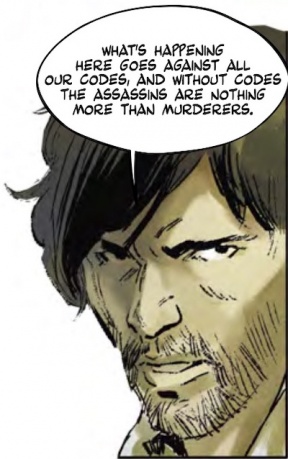
With a franchise name like Assassin’s Creed, there is often only one side of that title people often focus on: the assassins. However, their “creed” is extremely important, and often helps to distinguish them from either random criminals or their Templar adversaries.
“Nothing is true; everything is permitted.”
The above maxim is at the core of the Creed (capitalized thusly to denote which one), and has been lifted (with some minor modification) from the 1938 novel Alamut by Vladimir Bartol that served as the inspiration for the original game as the highest truth of the Ismaili, the Islamic sect that became the historical Hashashin (known in-universe as the Levantine Brotherhood of Assassins).
What exactly the core maxim means depends upon the speaker, and are tied deeply with the “Three Ironies” acknowledged by the Levantine Mentor Altaïr Ibn-La’Ahad in his codex. While these three may be explored later in another installment of these Isu Codices, it is important to note them up front in the most basic words. To paraphrase, Assassins attempt to promote peace through murder, open minds through adherence to a set of rules, and acknowledgement of the dangers of blind faith while practicing the same.
Younger or more antagonistic Assassins use the terminology to justify anything done in the service of the Brotherhood, while older and wiser ones instead see the words as a warning that the same is true for anyone else in other positions or organizations, with the difference being that they have a duty to help spread knowledge in order for society to learn and advance.
With those thoughts in mind, a collection of three core tenets were brought up, formulated and then passed down from the time of Bayek of Siwa in 38 BCE down to the present day in one form or another.
- Stay Your Blade from the Flesh of an Innocent: Killing those who are unrelated to a conflict is prohibited, and is at times punished. The actual use of this particular tenet seems to have waned over time, with severe punishment up until the late 12th century CE, but subsequently allowing technical “innocents” such as witnesses to crimes to be killed by the late 15th century.
- Hide in Plain Sight: The use of social stealth, hiding amongst a crowd until the opportune moment to strike, thus minimizing collateral damage and keeping the Brotherhood’s actions relatively secret, even if the ultimate results (deaths of several people) may be obvious.
- Never Compromise the Brotherhood: An essential tenet to any secret society, nothing could be done to expose the Assassins as a whole to threats, even if individuals may be targeted. While this tenet was not done away with, it had different ways of expression, and once the Brotherhood is made a target by outside forces without any fault of the individual members, war may go out into the streets. That said, actions such as creating bases of operations practically outfitted for war during the Ottoman Civil War in the early 16th century CE or captaining a pirate ship in the 1720s and 1730s with the Assassin insignia on the flag give the impression that actual attention to this particular tenet was rather lax over time.
While mind control is not outright stated to be against the Creed in its tenets, it is understood to be held in that regard nonetheless, likely through a variation on the first tenet, as showcased by then-Mentor Rashid ad-din Sinan’s use of mind control in Masyaf during 1191. As such, the events perpetrated by Colonel Boris Pash and Doctor Nathalie Chapman are definitely in violation.
Punishment for disobedience differs depending on both the time period and the individual sect. Depending on a number of factors including those two and other personal reasons (mostly amongst manipulators within the individual sects rather than strict adherents), such a sentence can include death, demotion, or expulsion from the Brotherhood itself. Death sentences are known to have existed as early as 38 BCE with Hidden One and Brotherhood founder Bayek of Siwa’s assassination of an ally who had gone too far, and at least as late as 1791 with Eseosa’s decision that fellow Saint-Domingue Assassin Jeannot Bullet had to die for breaking that same, first tenet, and also with the sentencing of Boris Pash of the American branch in the wake of Operation: New Frontier in 1963. Expulsion has only been seen once in the franchise thus far, with that of Arno Dorian of the Parisian Assassins in 1793 for repeatedly disobeying orders and killing without authorization, before being reinstated by 1794 for his increased maturity.
Continued belowMeanwhile, demotion seems to be very uncommon, only seen with Altaïr Ibn-La’Ahad’s case of demotion from Master Assassin to novice for breaking all three tenets in the course of a single mission, and even then was at least partially a scheme by Rashid ad-din Sinan to eliminate former associates rather than being a fully justified decision. As such, it is difficult to tell if such a choice is valid.
There is also something that seems reminiscent of a list of tenets for the Templar Order, acknowledged by Shay Patrick Cormac in 1776. “Uphold the principles of our Order, and all for that for which we stand. Never share our secrets nor divulge the true nature of our work. Do so until death – whatever the cost.” Given Cormac’s existence as a former Assassin, and the lack of such a creed with others, is as of yet unclear whether or not his words are common to other Templars.
The Great Purge

The “Great Purge” of 2000 was an event that occurred in late 2000, officially begun with the assassination of the Mentor of the global Assassin Brotherhood by Templar sleeper agent Daniel Cross in Dubai. Cross, having been implanted with subconscious hypnotic triggers from an early age by Doctor Warren Vidic of Abstergo Industries, had been brought to many different Assassin camps around the world, eventually brought to Dubai in order to meet with the Mentor on November 5, where he was unable to stop himself from murdering the Assassin leader before escaping, whereupon his new Templar “handlers” extracted the information on the locations of the many different hideouts through surgery and drugs, including the serum called “SK-345.”
Ultimately, the purging of these camps continued through at least into early December, if not later, and the Assassins, having been a centralized, global organization by that point, had to splinter into various cells once again with only loose communication to avoid being sought out by Abstergo, leading to the once-more underground status of many cells in the modern day storylines.
Without enough focus, the Assassins were unable to prevent the Templars from installing their preferred candidate for United States Presidency in the 2000 election. Furthermore, in order to root out who remained, a variety of “Assassin hunter” teams were formed, most notably Sigma Team, but also Delta Team and Team Epsilon, among others.
As for Daniel Cross, he became a fully willing member of the Templar Order by 2002, becoming a Master Templar (the highest possible non-leadership rank) as well as a member of the Inner Circle alongside his father figure Vidic up until Cross’s death in 2012, which itself is another story altogether.
Operation: New Frontier

Known in real life as the assassination of John F. Kennedy on November 22, 1963 in Dallas, Texas, this event has had a host of involvement in the undercover war even before the release of “Bloodstone.” In Assassin’s Creed II, it was revealed that the assassination was due to the dual reasons of Kennedy being close to opening up voting rights to more people (thereby making the public more difficult to control for Abstergo) and in order to steal his Apple of Eden, the very same one that George Washington had in a time around the end of the American Revolutionary War before dropping it into the Atlantic Ocean. His death would also allow them to search for another Apple of Eden he had kept them from looking for that was located on the moon, a search that would be known to history as the 1969 Apollo 11 moon landing.
The primary source comes from a document recovered from Abstergo Industries giving the go-ahead for the shooting, from which we also have the mission’s name. Evidently in this version, Lee Harvey Oswald and Abraham Zapruder were both Templar plants, with the latter up to go through with the killing if Oswald were unable for one reason or another.
Just in case, they also had US Secret Service agent William Greer, Kennedy’s driver, trained in the use of “PE2” (Piece of Eden 2, another Apple with a host of famous wielders in the franchise, including being the very first Piece fans of the franchise ever saw), and he would slow the car down in case the first gunshot was not enough, then drive off and bring the Apple to the Templars. In order to help this deception, someone else would use a different Apple, PE1, to create the illusion of a phantom appearing on a hill nearby to Zapruder (the man on the grassy knoll) in order to cause further panic.
Continued belowOf course, as “Bloodstone” shows, things were not so simple as these machinations.
New Issues
As with “Conspiracies,” this analysis will be told in chronological order.
Assassin’s Creed: Bloodstone, Book 1
Following the events of “Assassin’s Creed: Conspiracies,” Boris Pash continued onward, eventually implicated in Project BLUEBIRD (see above), publicly acknowledged as “a CIA research program on psychological conditions.” The actual usage of the program is far more sinister, as Pash instead wanted to utilize the research for far darker ends involved in mind control.

On February 8, 1957, at the Walter Reed Army Medical Center, Boris Pash was accompanied by former Soviet hitman turned CIA agent and American Assassin Alekseï Gavrani (who was used as the viewpoint for the Animus user) to visit John von Neumann, one of the engineers behind the “Rainbow Project” (the Philadelphia Project). Given von Neumann is known to have died later that same day in history, and Pash’s actions when coupled with his excuse of the man having “inconveniently” just died of cancer (in spite of none of the various personnel apparently being aware of this at all), it seems rather obvious that he went into the room, executed him, and stole his Apple of Eden.
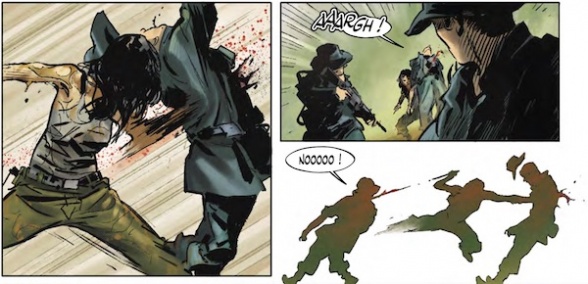
By January 2, 1963, Pash had formed the Bloodstone Unit, a paramilitary Assassin cell loyal to him that he used for his aims of control, dispatched in Vietnam to fight Templars on both sides of the war, primarily aimed against South Vietnamese President Ngô Đình Diệm’s regime on account of him being a Templar puppet leader and dictator. Members included Gavrani, a woman named Zenia, William Greer, and Julia Gorm, the daughter of Eddie Gorm.
The latter had never actually been formally trained at all, having had the necessary knowledge to fight implanted into her with the use of the Apple of Eden in Pash’s possession to make her more effective than most of the rest of the unit despite being in her twenties. She in particular seemed virtually emotionless, killing people to avoid “dead weight” and eager to brutally kill people with her Hidden Blade and knife.

Bloodstone had captured the American soldier Cooper from a downed helicopter during the beginning of the Battle of Ấp Bắc that day, with the soldier apparently being a Templar agent. When Pash began torturing him by using a machine startlingly similar to a smaller version of Die Glocke, likely created using the Apple much like how other inventions were created through their use as early as the 1200s, Alekseï tried to bring up his reservations about the torture itself and Julia finishing off the wounded rather than helping them, Pash actually came out and directly dismissed the Assassin, telling him to go home if he had “lost [his] faith” in their quest to free humanity.
On November 2, 1963, upon entering Saigon, Pash orchestrated the death of Ngô Đình Diệm through manipulating the CIA into staging a coup. While the act was allegedly meant to free Vietnam of a dictator and Templar puppet, all it did was create a domino effect on the region. Much like Jacob Frye’s various self-assigned missions in London during 1868, leading a direct assault against a public figure is more likely to cause a negative impact than a positive one.
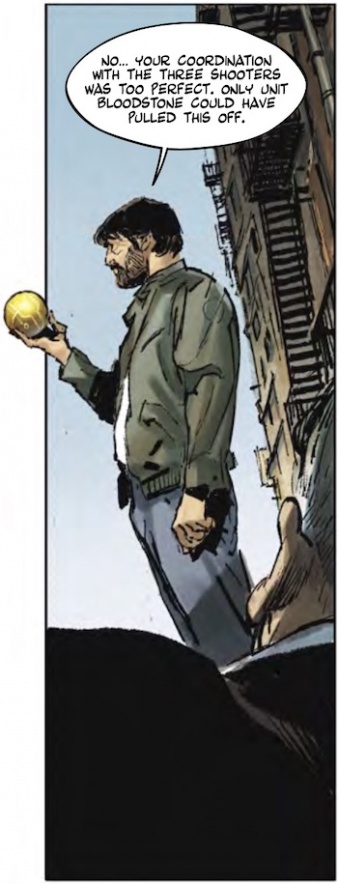
Gavrani is next seen encountering a fleeing William Greer from the Kennedy motorcade shortly after the assassination on November 22, 1963, finding him running off with an Apple of Eden in his hands. While Greer tried to play it off as entirely Oswald’s doing, careful examination by Gavrani allowed him to figure out that not only was Oswald not the only one involved, but that he had been framed in the first place. The three gunshots would only be possible to coordinate with Greer if they were all acting as the Bloodstone Unit, something that Greer did not deny. When asked to explain why Pash wanted to add another Apple of Eden to his collection, Greer assaulted Gavrani, resulting in him being knocked unconscious.
Continued belowLater that day, Gavrani gave the Apple to a fellow Assassin and member of the United States intelligence network named “Bill.” In order to stop Pash’s perversions of the Brotherhood and keep him from making the world even worse through his methods, Bill requested that Gavrani become “QJ/WIN” again to wipe out Bloodstone altogether.
On December 6, 2000, Tomo Sakagawa was rendered, along with Hajime Shimada, one of the only survivors of the assault on the scientist-focused Assassin training camp on Kyushu Island, Japan when it was attacked by Maxime Gorm and a group of Templars during the Great Purge, his mother Yuri, leader of that cell, being one of the victims.

By July 28, 2017, Sakagawa had become obsessed with finding and killing Gorm, tracing him through his work at the Madrid Abstergo archives (which had been destroyed by the Assassin’s Creed live-action film’s Callum Lynch in 2016) to the Rameaux Clinic in Switzerland under the leadership of one Doctor Nathalie Chapman. Apparently Gorm had also worked at the Despite Shimada’s reservations about allowing it on the basis of Sakagawa being a scientist instead of a field agent, he relented when Sakagawa insisted on going undercover.
In order to do so, Sakagawa took up the alias of “Doctor Florent Carpentier” to infiltrate Dr. Chapman’s work. In doing so, he grew close to his patient, Elisa Adler (discussed in previous Codices), seemingly close to the point of romantic interest, though he remained primarily concentrated on how she could help his vengeance scheme.
However, it turned out that the subject of his investigation, Chapman, was actually an Assassin herself, searching for information on Maxime Gorm to help find information about how he, much like Daniel Cross, had been turned into a Templar agent against his will using methods first undergone “five decades earlier,” implicitly during the experiments of Pash, and including the very same “SK-345” serum that had been used to extract information from Cross. Furthermore, the Adler family had taken over the creation of the mind control methods from the Gorms earlier in the first place, so the goal of Chapman’s cell was to both assassinate Maxime Gorm and destroy anything from the Chapman project.
By November 2, 2017, the Bleeding Effect with Sakagawa had become severe enough that he had forgotten his own mother’s face and would think he was Alekseï Gavrani for hours at a time outside of the Animus. However, despite being told to pass the mission to someone else by Shimada, he elected to continue in order to understand Maxime Gorm.
On November 11, 2017, Dr. Chapman’s use of the Animus Omega had been confirmed to be a means of erasing subjects’ memories and replacing them with others’ genetic memories by way of a talk with Elisa. The decision was made to try and secure the research from the Adler family while a group of Assassins would take out Chapman, both to happen the next day.
Much of what happened on November 12 was already addressed in “Assassin’s Creed: Conspiracies,” from the parent Adlers’ deaths to Elisa and Maxime Gorm’s escape. What was missing was some context. Rather than just wanting to help her get better, Sakagawa had brought Elisa in for the dual aims of achieving revenge against Maxime Gorm and securing the research. In fact, once he had sight of Gorm, he immediately went to attack, rather than wait as the plan was to be carried out, and ended up killing both of the Adlers himself before, while trying to kill Gorm, being stabbed in the right eye by a syringe.
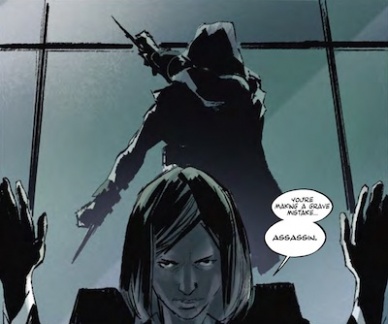
One hour later, the assault against Dr. Chapman was attempted, but she escaped with the help of her security officer Stanislas, deciding to search further through the use of a lesser version of the Animus if she could gain access to Maxime once more.
On November 15, 2017, Sakagawa awakened, having survived Maxime Gorm’s escape. However, he was informed by Shimada that he needed to delve into Gavrani’s memories once more in order to find what was discovered about “memory resurrection” in order to prevent Dr. Chapman from uncovering the means to “bring back any Assassin from the past,” thereby effectively continuing the war by resurrecting older agents.
According to the note at the end of the issue, the second installment of this duology is set for translation in June of 2020, so until next time!






